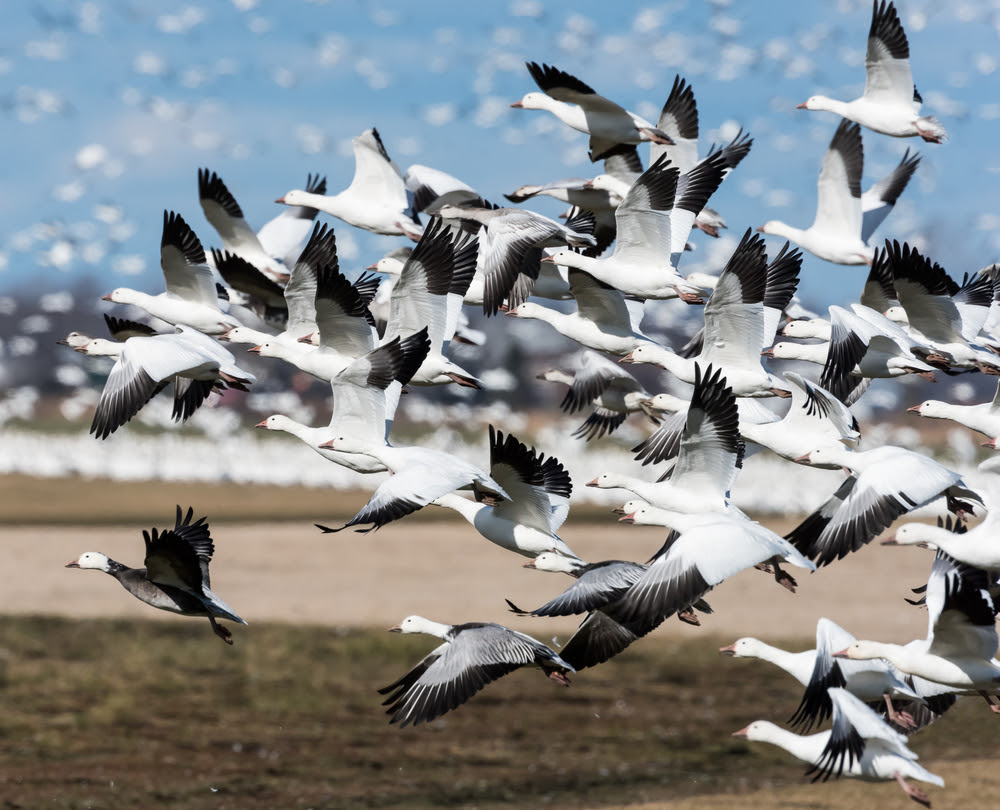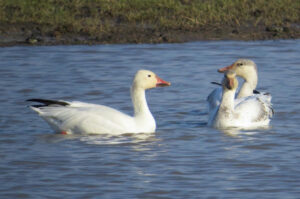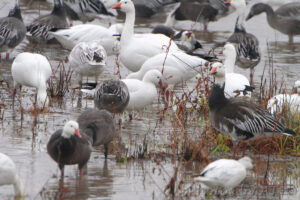Snow Goose, Anser caerulescens
Bill Rowe
Right now, in the most frigid part of the year, it hardly seems right to think about spring migration—but in fact it is under way. The waterfowl (i.e., ducks, geese, and swans) are collectively our earliest spring migrants, and the Snow Goose leads the way. Any time you are outside and hear a high-pitched yelping, like distant dogs, look up and scan the sky and you may see a ragged V or interlaced skein of Snow Geese heading north. You can usually tell that they are Snows, not White-fronteds, by the presence of both white and dark birds in the same group; see “Identification” for the additional challenge of spotting Ross’s Goose. At certain times (late fall, early spring) and in certain major wetland areas, the Snow Goose is not only common, it is overwhelmingly abundant, e.g., an occasional March census of over a million at Loess Bluffs National Wildlife Refuge, northwest Missouri. The growing numbers on its Arctic breeding grounds have sometimes damaged wide expanses of tundra vegetation, and even an expanded hunting season hasn’t put much of a dent in the population.
IDENTIFICATION: Snow Goose is a medium-sized goose that comes in two phases or “morphs”: white with black wingtips, and dark blue-gray with variable white head, neck, and other areas. Until the 1960’s, these were thought to be two different species, Snow Goose and Blue Goose. Immature white morphs are dingy pale gray, while dark morphs are dark all over. A little cousin called Ross’s Goose, formerly a rarity here, has increased in recent years. It looks like a “toy” white-morph Snow Goose and can be picked out by its smaller size, shorter neck, and stubby bill with a bluish base (the Snow’s bill is all pink with a black “grin patch”).
ST. LOUIS STATUS: As everywhere, the Snow Goose has become steadily commoner here; it is routine to see them high overhead by the hundreds or thousands in February-March and October-November. Some also spend the winter with us around refuges and conservation areas. Ross’s Goose is also a regular migrant and wintering bird on the same schedule, though in smaller numbers.
Learn more and listen to the calls of Snow Geese here.
Adult and immature white morph
Photo Credit: Bill Rowe
White and dark morphs with 4 Ross’s Geese
Photo Credit: Al Smith






